China’s national broadcaster CCTV censored close-ups of crowd shots throughout the World Cup in Qatar – but how did they it, why were they doing it, and what does it all mean?
A funny thing happened shortly after the start of the FIFA World Cup. I was browsing WeChat, the ubiquitous social media platform in China which combines Facebook-style posts with WhatsApp-style messaging (plus a whole lot more), and I came across this video post below:
What it showed was footage from parallel broadcasts of the Australia vs Tunisia World Cup game on November 26, 2022, with the international feed (complete with BBC graphics) at the top and China’s state-run channel CCTV’s version at the bottom. They were exactly the same, but with one crucial difference: whenever the BBC version went to close-up shots of the crowd, the CCTV version showed close-ups of the two coaches on the sidelines instead.
The general commentary online had made the connection with China’s COVID policy at the time and the World Cup in Qatar, ostensibly asking the question “Why is it that thousands of people can congregate at the World Cup without wearing masks whereas we here in China are largely confined to our homes?”
A (Very) Short History of CCTV’s Censorship
Seeing as this conversation sat squarely in the middle of my China/sports/media lane, I re-posted the video clip on Twitter, but didn’t think too much of it at the time. After all, “CCTV Manipulates Footage” isn’t exactly news in this part of the world. To illustrate that point, here are a couple of classics that stand out from over the years: the channel’s mythical nickname CCAV (with the AV referring to Adult Video) came about after an item on the dangers of watching pornographic videos featured a couple of students who later conceded they’d been handed a script to read (see the Urban Dictionary entry here, which highlights the channel’s propensity for fake news).
Then, famously, in a 2011 report about the Chinese J-10 fighter plane, CCTV swapped in footage from the 1986 movie Top Gun to show what it said was a missile hitting its target. It had, of course, but not quite the target that was implied.
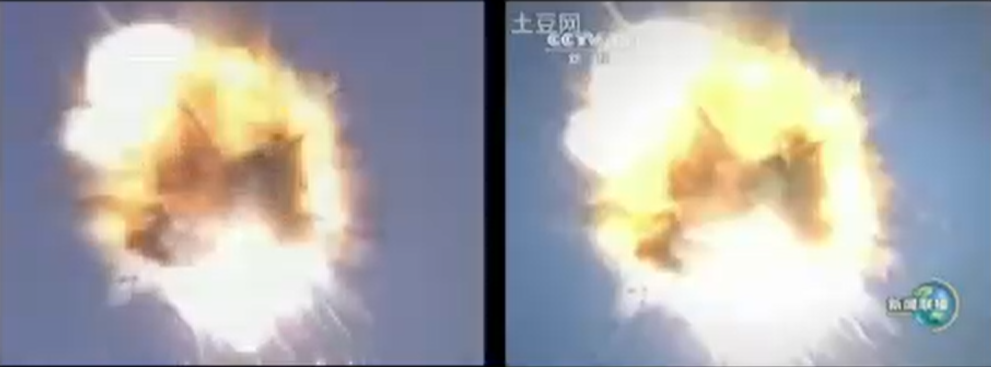
But the World Cup crowd footage quickly struck a chord. More than one million views and three million impressions later, the clip I’d posted was issued with a takedown notice from an overzealous FIFA lawyer. According to Twitter’s Fair Use Policy, my counter claim arguing that I was using a short clip of footage in order to illustrate a point should have been a slam dunk case, but apparently one or two content moderation employees have left Twitter in recent weeks, so the case remains buried in the Court of Musk – and the video remains hidden for now.
What on earth was happening?
There are a couple of things to unpack here – what exactly was going on and why?
Having spent a time in TV broadcast trucks around the world, plus knowing a fair amount about the decision-making process inside CCTV, the answer to the first question was immediately clear to me – but apparently I was on a bit of an island here (something to which I’ll return later). As I laid out in a Twitter thread, CCTV would typically transmit the host broadcast supplied by FIFA directly back to its viewers in China. However, given the short broadcast delay, CCTV’s own director in Doha could very easily switch its match feed to one of the alternative “safe” camera angles – typically the one trained on the coaches at all times, but also any aerial or drone shots or the “high behind” wide shot from a camera placed way up behind the goal – to replace a crowd close-up. Once the coast was clear of crowd close-ups, CCTV would then rejoin the main FIFA match broadcast again.
That 30-second time delay is because Chinese censors are very nervous about screening live anything over which they have no control. There are very good reasons for this. Remember the 2004 Super Bowl, famous around the world for the Janet Jackson breast flash? Well, at CCTV Towers that same broadcast is remembered very differently, because a shot of the iconic Tiananmen Square Tank Man picture somehow snuck its way into the broadcast – and onto Chinese screens for a brief moment. If Super Bowl producers have been nervous ever since – with a time delay now standard for the US broadcast – imagine how much more paranoid Chinese producers are with their careers on the line. Tibetan flags have appeared at German and French football matches in recent years – aimed specifically at the watching Chinese audience – so this is a legitimate concern.
When I saw the crowd shots being censored at the World Cup games, it fit with this long-established pattern for CCTV live sports broadcasts, so it didn’t even occur to me that it might be fake. But, boy, did a lot of people think differently.
Spend any time on Twitter calling it how it is and the pro-China trolls will come after you. That’s to be expected. But this time, a number of more reasonable commenters – including some whom I count among my friends – called me out for spreading fake news. The most common “rebuttals” posted a picture of a stadium wide shot in which you could see the stands, though I’d clearly referred to close-up shots of the crowds, where the unmasked masses were most obvious. But there were also other pictures from Chinese broadcasts that did appear to show crowd close-ups, so clearly further investigation was warranted.
What I found was that the streaming platforms in China – including Migu, Toutiao and Douyin – had sublicensed their broadcast rights from CCTV, but were actually airing the main FIFA host feed in its entirety, not the crowdless version seen on CCTV, so the crowd close-ups were still plain for all to see on certain platforms in China.
Get your copy of Sporting Superpower here.
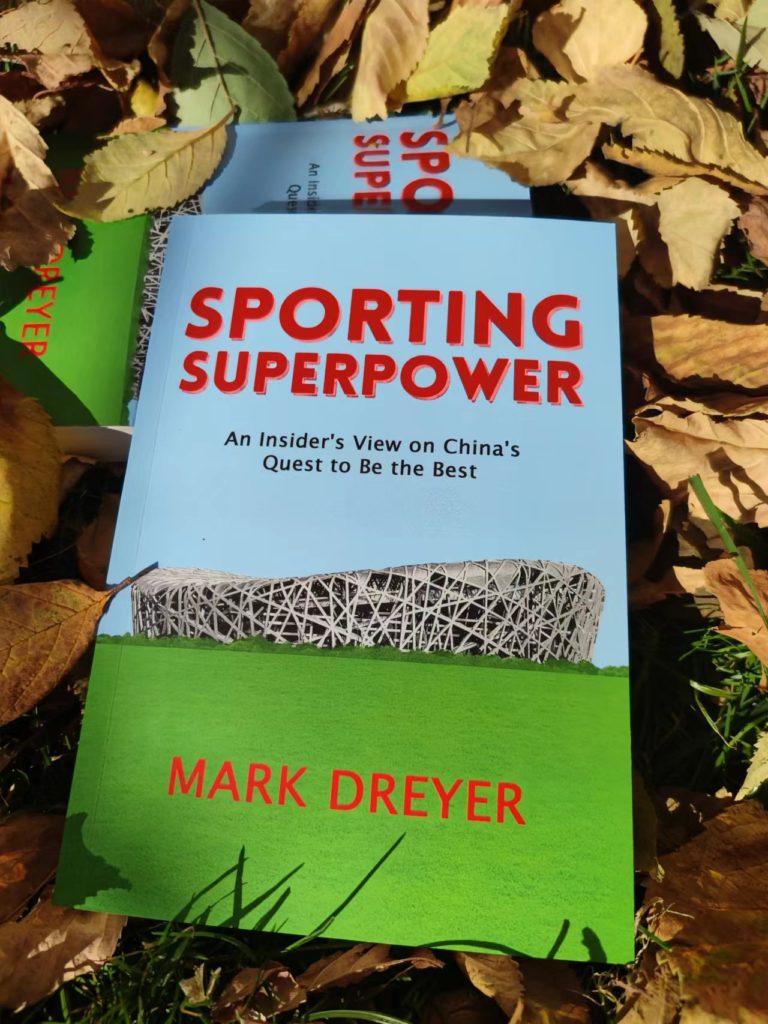
Vanishing goal celebrations
In order to verify my own sanity, I watched dual broadcasts of the Brazil vs Switzerland group stage game on November 28, comparing the CCTV broadcast with that of the UK’s ITV, which was carrying the main FIFA broadcast shown all around the world. I counted 86 close-up crowd shots on the ITV broadcasts across 42 segments (national anthems, for example, had multiple shots in succession, which I classed as one “segment”) that were not shown on CCTV. Instead, viewers saw alternative shots, with the majority of them featuring close-ups of the Swiss and Brazilian coaches.
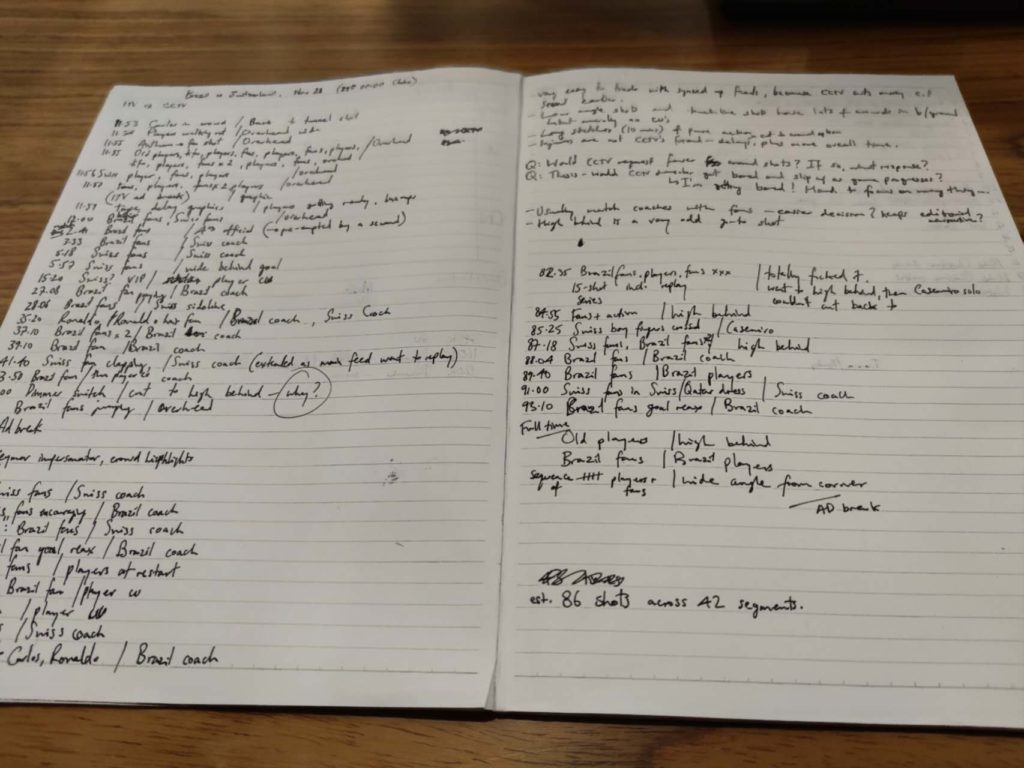
On just one occasion early in the broadcast, CCTV highlighted some figures in the stands, showing a brief shot of former Brazil stars Cafu, Roberto Carlos and Ronaldo watching from the VIP seats, though notably did not show them on three subsequent occasions when ITV viewers saw them. But while much of CCTV’s broadcast would have seemed largely normal to the uninitiated – after all, the vast majority of the program consists of on-pitch action – the reaction to Brazil’s goal was revealing.
As you might expect, following Casemiro’s 83rd minute goal, the FIFA match director cut back and forth between celebrating players and screaming Brazilian fans in the stands. That immediately set the alarm bells ringing for the CCTV director, who cut away to the “high behind” shot while waiting for the danger to pass. Typically at this point the CCTV match director would cut to live reaction shots of coaches/managers, either celebrating or disappointed depending on the team. Perhaps that camera wasn’t framed up properly, or maybe the CCTV director made the wrong choice or wasn’t quite paying attention. Who knows?
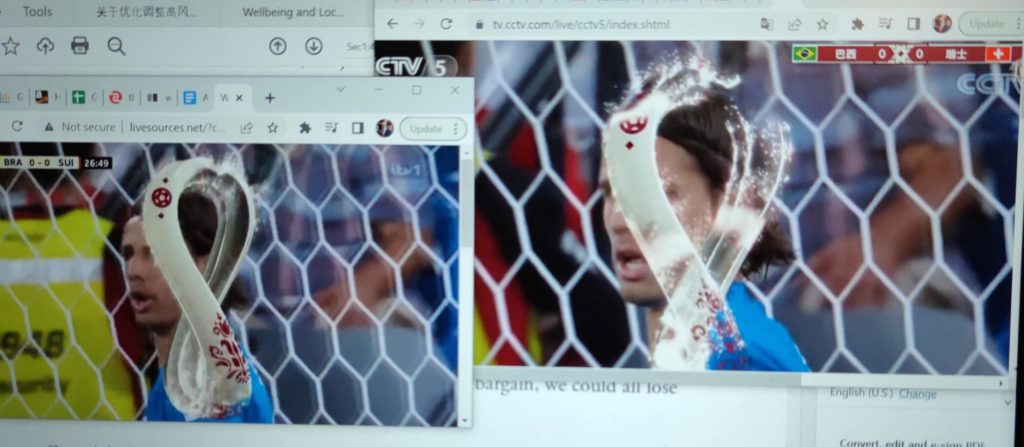
But while the CCTV match director was dithering – and still on the high behind shot – the FIFA match director started to roll the replays. It’s harder to cut in and out when the replay graphic is swooshing across the screen (see above). If you cut half way in or out of that, it will look odd and will give the game away to viewers that something untoward is going on. But the CCTV director somehow missed his cue. By the time he realized the replays were on, it was too late. So CCTV stayed with this very high wide shot – showing the celebrating Brazilian players way, way down below like tiny yellow ants on a leaf – until all three replays had finished, after which time it was then safe to cut back to the FIFA match feed. As a result, CCTV viewers never saw a replay of the game’s only goal. Needless to say, there were complaints online from disgruntled fans.
Still not convinced?
Back on the joyous platform that is Twitter, some were still not convinced, sending me more wide shots of the crowd (groan) to counter a point I wasn’t making. However, as this story gained more and more attention (see some links in which I am quoted at the bottom of the page) it did appear as though CCTV eased up on the censorship. I watched part of the Denmark vs Australia game on CCTV on November 30, which included the majority of the crowd close-ups found in the international feed, but there were still a few rogue high behinds. Below left was the kind of joyous crowd shot that would have been scrubbed from earlier broadcasts; but the goal celebration below right – with Australian players appearing like the Brazilians had done the day before after their goal – is a shot no director in his or her right mind would use to capture the moment. Note, too, how the CCTV-5 logo and match graphics disappear from the top-right corner of the screen when an alternative shot is used.
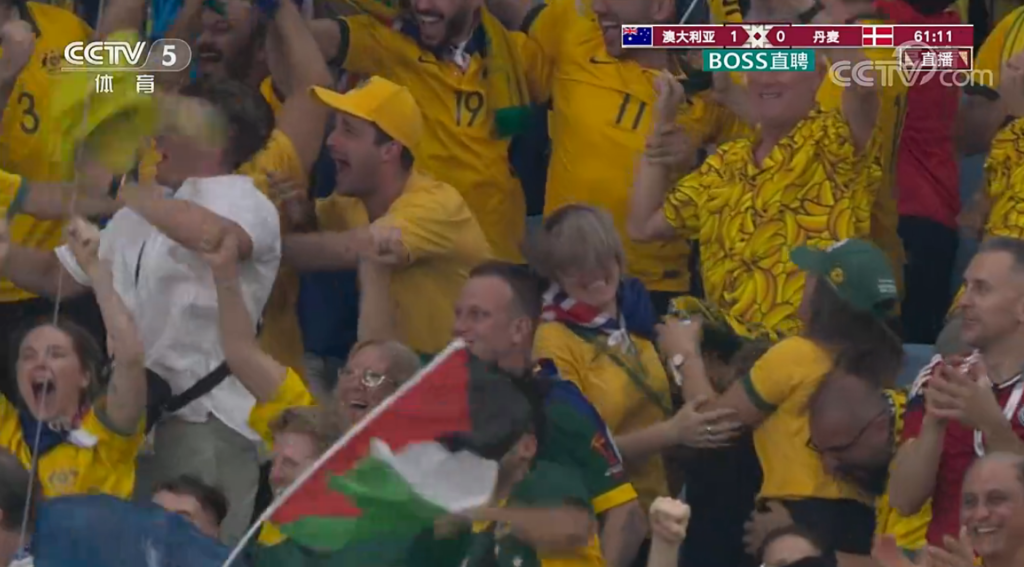
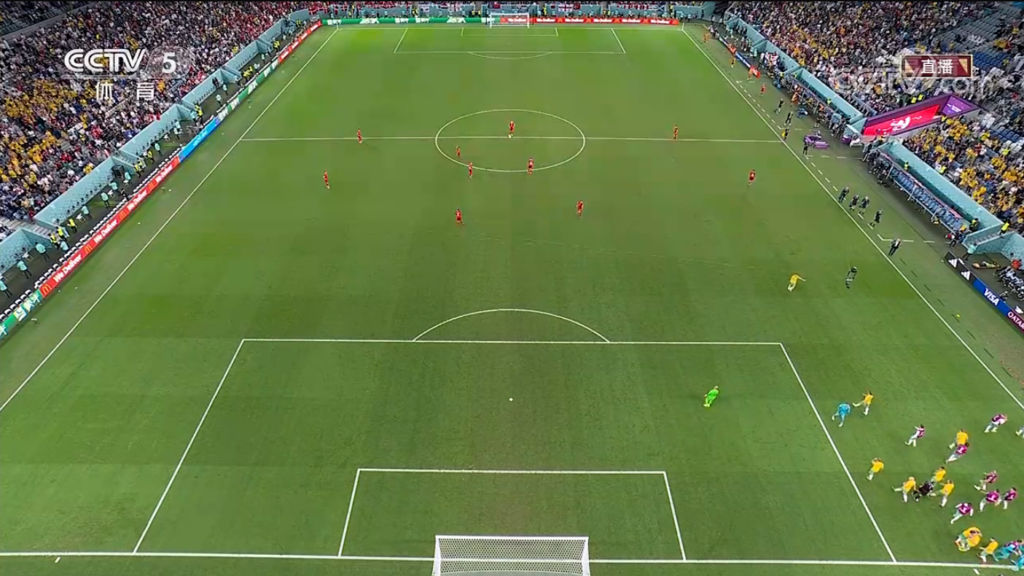
The story had become such a big one that plenty of other people were now comparing game footage and posting their results. It had been proved, beyond a shadow of a doubt, that CCTV had censored crowd close-ups – at least some of the time and in at least some of the matches. The real question was why?
Reasons behind the censorship
The are two main theories behind why this happened: 1. sensitive crowd content, and 2. COVID considerations.
As detailed above, sensitive content in the crowd has long been an issue for live Chinese TV broadcasts and was, I believe, absolutely a factor in the censorship we saw happening during the World Cup. I heard a suggestion from a source in Doha that a Tibetan flag was seen at the Australia vs France game on November 22 – Day 3 of the World Cup. I went back to watch footage of that game and the closest I could find was a couple of flags behind one of the goals (see below), which, while clearly were not Tibetan flags, may just have been close enough to spark a panic inside a CCTV broadcast truck. There’s also a French guy called Hugues Picon who was detained at the 2018 World Cup in Russia for holding up a Tibetan flag (story here), so perhaps the censors had a right to be worried.
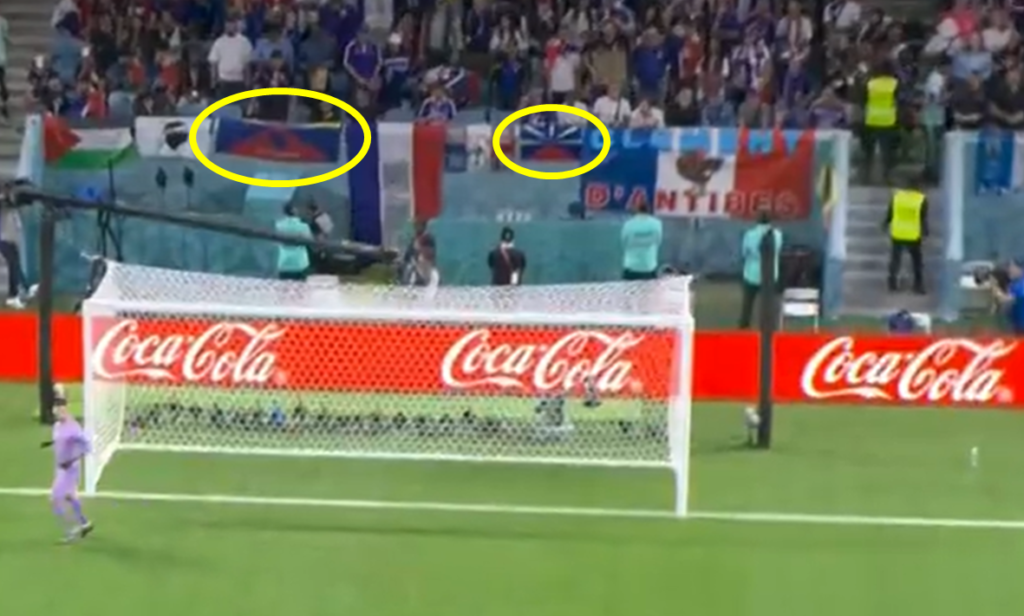
But much of this historical nuance was lost in the main narrative, which was that China deliberately censored crowd close-ups because it didn’t want its population to notice that the rest of the world had moved on from the pandemic. Political scientists were actually citing the World Cup as a key moment in China’s shift away from COVID-Zero, joining the dots between this online World Cup irritation and the recent – and rare – offline street protests led by those sick of the government’s COVID-Zero policy.
This all struck me as rather odd. For one thing, even given all the censored crowd close-ups, it’s still immediately obvious to anyone watching the CCTV broadcasts that there are thousands of people cheering in a stadium game after game, something that most certainly isn’t happening in China, from where the hosting rights for next summer’s Asian Cup have already been withdrawn. However, to take a somewhat philosophical angle, if the majority of people – both inside and outside of China – have already decided that CCTV censored crowd close-ups in a ham-fisted attempt to disguise the lack of COVID in the rest of the world, does it really matter if that wasn’t the case?
As with many things in China, I think the answer was more complicated. My personal feeling is that both the sensitive content and the COVID angle played into the censorship of the crowd shots. I’d already heard months beforehand, for example, that one of the reasons why CCTV was showing very little European football was because it didn’t want to play up the fact that the rest of the world outside China had returned to normal, as illustrated by full stadia across the continent every weekend – something that would give more weight to the COVID angle. Remember, too, that western sports media made tweaks to their broadcasts as games – without fans, at first – returned during the pandemic, re-positioning cameras, framing shots differently and piping in fake crowd noise, all to give the viewer a distorted picture of reality.
But given CCTV’s censorship was inconsistently applied across the World Cup, was there a connection to China’s changing COVID policy, which, at the time of posting, remains fluid? Perhaps. But there are other reasons I can think of, too. Maybe each CCTV match director had a slightly different risk appetite for showing the close-ups; maybe a directive came down from above after the censorship story blew up stating that CCTV should show more crowd close-ups in order to “prove” that it wasn’t censoring them; maybe CCTV made some representations to FIFA that fewer crowd close-ups be shown on the host feed or that crowd close-ups could be pre-screened to avoid sights offensive to Chinese sensitivities. Maybe, just maybe, CCTV match directors genuinely prefer showing coaches gesticulating on the sidelines than passionate fans singing and dancing. All of those theories and more are plausible (although I think the last one is a stretch).
Maybe someone will take a closer look the next time CCTV broadcasts an international tournament (fingers crossed, post-COVID) and find out whether the censored crowd close-ups from the World Cup are a thing of the past or not. Maybe I’ll even do it myself. But, for now, we’re left with several theories, which are more or less plausible depending on your particular viewpoint.
Bigger Picture
One of the most interesting aspects of this story is that plenty of people I spoke to were variously convinced by wildly different interpretations – and that’s true of lot of things these days, but perhaps more so when it comes to China topics. I asked one of my friends why he initially thought that the concept of CCTV censoring crowd shots was nonsense, before later coming around once he had seen the evidence. He replied that he’s increasingly wary of China narratives which sound too good to be true in terms of furthering a political point, especially given that he first heard about the crowd censorship from someone who “spends far too much time watching anti-CCP channels on YouTube”. He went on:
“It’s a bit like when Trump said the virus came from a lab leak at the Wuhan Institute of Virology, and lots of scientists shouted this down – largely because of the messenger. But it turns out that there is actually quite a lot of evidence that it came from a lab leak and some scientists say this is now the most likely explanation. The point is that there should never have been such an automatic backlash against the theory.”
This story had the perfect mix of attributes for a mainstream media China story: censorship, frustration with government (both online and offline), COVID, and more. And while those aspects were all relevant, I hope the above has shown that there’s a little more nuance than the attention-grabbing headlines showed. If you enjoyed the read, please consider checking out my book Sporting Superpower here, where there’s much, much more of this sort of thing – especially when it comes to political decisions trumping sporting ones, as has clearly been seen in this case. It’s a perfect holiday read!
Selected links:
- China Appears to Limit Crowd Shots to Avoid ‘Zero-Covid’ Comparisons [New York Times]
- Chinese state TV obscures maskless crowd in World Cup broadcast [Washington Post]
- China censors maskless crowd footage in World Cup broadcasts [The Guardian]
- World Cup Fans Without Masks Pose Dilemma for Chinese TV Amid Protests [Bloomberg]
- How China’s ‘soft power’ World Cup turned into a nightmare [The Athletic]
- China Reverses COVID Propaganda After Years of Dire Warnings [Newsweek]
- World Cup Fans Without Masks Pose Dilemma for Broadcasters in China [TIME]
- China accused of disturbing act during Socceroos game at World Cup [Yahoo Sports]
- Not even great firewall of China can halt beautiful game’s joyous advance [The Times]
- China censoring World Cup crowds on TV by cutting away to hide maskless faces amid lockdown rage [The Sun]
- Chinese state TV cuts shots of mask-free World Cup fans [New York Post]
- Chinese government TV CENSORS World Cup games to avoid showing fans who aren’t wearing face masks as protests against country’s ultra-tough Covid measures explode [Daily Mail]
- China’s state-owned television is editing maskless fans out of its World Cup coverage [Fortune]
- China TV censoring World Cup fans footage amid zero-Covid protests [The Telegraph]

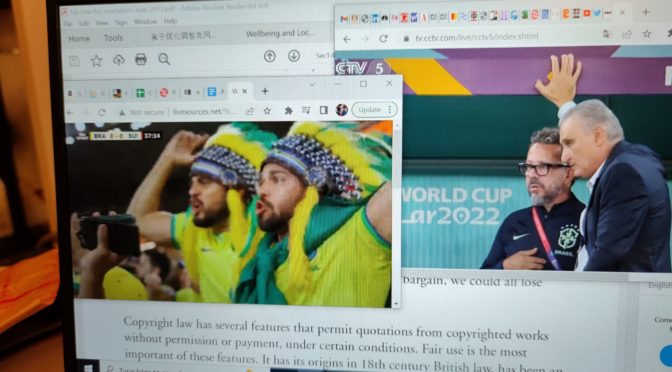

after I read a few sentences above I got useful information for me